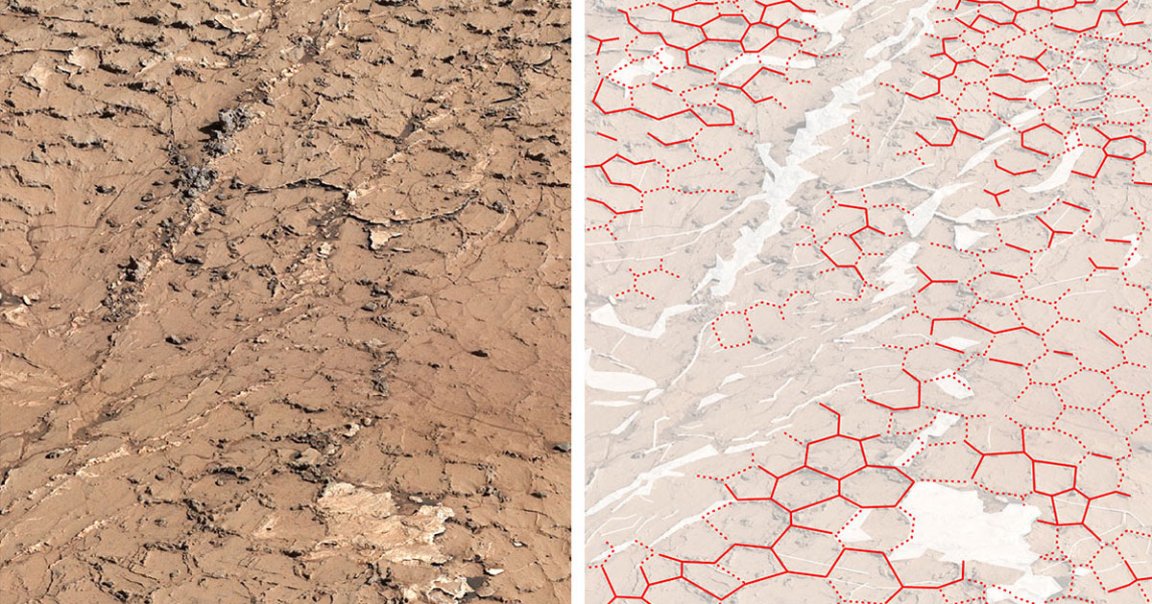
Mud Veins
NASA’s Curiosity Mars rover has come across a fascinating hexagonal pattern in salt deposits — and they look eerily reminiscent of Earth-based basins that dry out seasonally, providing a fascinating new clue about the ancient history of the Red Planet.
The landmark finding, as detailed in a new paper published in the journal Nature, is the “first fossil evidence of a sustained, cyclical, regular Martian climate with dry and wet seasons,” according to a press release.
“Instead of sporadic hydrological activity induced by impacts or volcanoes, our findings point to a sustained, cyclic, possibly seasonal, climate on early Mars,” the paper reads.
In other words, we’ve never been closer to confirming once and for all that the Red Planet went through periods of lush water-rich seasons and much drier conditions — something that could bring us a step closer to answering the question of whether Mars was once teeming with life as Earth is now.
My Wets!
Curiosity, which has been roaming the barren Martian landscapes for over a decade now, spotted the mud cracks in 2021 while ascending the sedimentary layers of Mount Sharp, a massive mountain that rises three miles from the floor of the Gale crater.
As the Martian mud in the area dries out, it shrinks and cracks, forming T-shaped junctions, something Curiosity had already discovered. But now scientists are saying that prolonged — and more importantly recurring — exposure to water likely caused these cracks to turn into Y-shaped junctions, forming hexagonal patterns.
“This is the first tangible evidence we’ve seen that the ancient climate of Mars had such regular, Earth-like wet-dry cycles,” said lead author William Rapin of France’s Institut de Recherche en Astrophysique et Planétologie in a NASA statement.
“But even more important is that wet-dry cycles are helpful — maybe even required — for the molecular evolution that could lead to life,” he added.
“Over 11 years, we’ve found ample evidence that ancient Mars could have supported microbial life,” said Curiosity project scientist Ashwin Vasavada. “Now, the mission has found evidence of conditions that may have promoted the origin of life, too.”
More on Curiosity: NASA Rover Snaps Amazing View of Sunset on Mars